Behind the scenes at Chelsea Flower Show: the mellow Autumn tones match this year's relaxed vibe
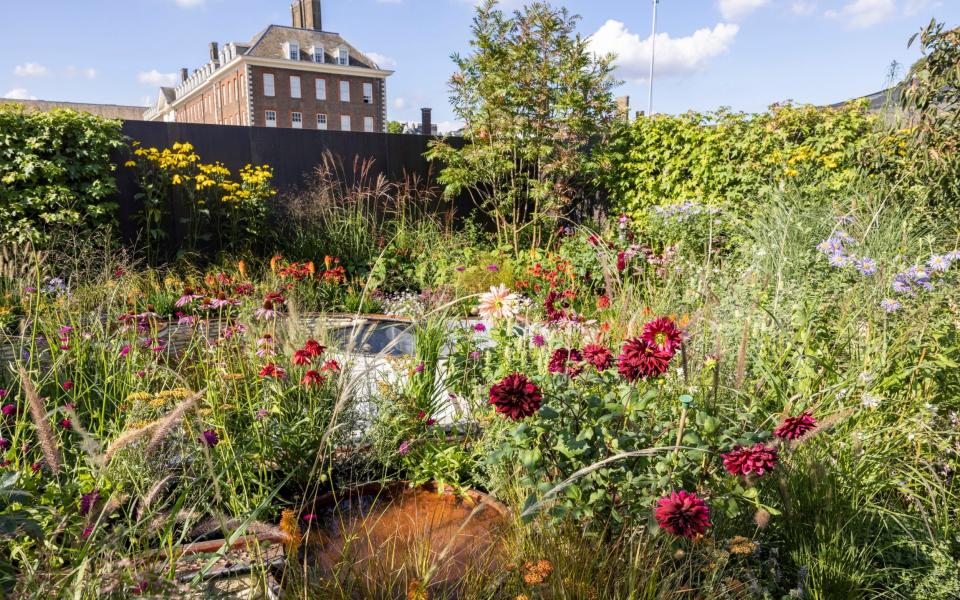
It was brilliantly sunny at Chelsea on Thursday and the atmosphere was extraordinarily laid-back, given how close it was to opening day. The six Main Avenue show gardens have more space around them than usual (in a bumper year there have been 20 large gardens) so the usual feelings of pent-up frustration were largely absent – as were the hard-pressed, often short-fused traffic stewards. The autumnal sunshine is always more relaxing, with its mellow tones – quite different to the get-up-and-go in spring air. Most exhibitors agree there is a fabulous camaraderie on site, with everyone keen to help others if needed, and this year it was even more prevalent than usual.
The biggest downer during build-up was the deluge on Tuesday: designer Peter Chmiel fell into his water feature and others were complaining of trench foot from all the flooding (the obligatory steel-toe-cap boots take an age to dry out). But this year there are so many gardens telling us what to do about climate change it was almost as if they were being given a free trial.
Other exhibitors found themselves playing musical trees as various wonderful specimens became too autumnal too soon, possibly thanks to the cool summer. One garden actually had to swap out its trees twice. This is an incredible palaver as it upsets all the carefully constructed landscape around them – not a decision to be taken lightly.
I bumped into veteran garden writer Peter Seabrook, who has seen more Chelseas than most, and he reckoned the main gardens were sadly lacking in colour. We have all been expecting a riot of dahlias, zinnias, heleniums and the like. However, many of the big players were using a restricted, muted palette with small pops of colour, as is the trend – large, unsophisticated shows of primary colour are not in vogue with most designers here. And, as sustainability is a big buzz word in almost all the gardens, the more natural and subtle tones work effectively alongside that.
The first garden I visited at the top of Main Avenue was the RHS Queen’s Green Canopy Garden – occupying the awkward triangle site – designed by David Dodd (theoutdoorroom.co.uk), who helped create the Duchess of Cambridge’s “back to nature” garden at Chelsea in 2019. The Queen has apparently planted 1,500 trees in her lifetime and, as part of her platinum jubilee celebrations next year, would like us all to plant more – something most would go along with.
I don’t think anyone would dispute that the “plant a tree for the jubilee” initiative is brilliant; I just wish they would not just showcase the planting of massive specimens which cost a fortune, don’t have a natural shape and take lots and lots of after care. For the cost of each of those big trees I reckon I could plant 1,000 small ones which would overtake the big boys and look more natural in 15 years or so. I realise that Chelsea is a show, but if we really want to encourage everyone to plant trees, let’s try a more realistic approach.
My other slight quibble was with the beautifully sculptural large “hay” bales created from woven willow – a touch out of season, surely? Even Jeremy Clarkson knows that bales could be actual straw in late September. There is no doubt though, that bales are always evocative of late summer and they lifted the tableau of woodland and meadows. The farm track was formed from Fittleworth crushed stone, a type of hoggin.
Next I met landscape architect Michael Balston, who has been attending Chelsea since 1976 and did his first garden in 1978, for Harpers & Queen, which I remember to this day: a striking design with black and white chequered paving – I loved it. This year, working with Marie-Louise Agius, he has designed the RHS COP 26 Garden (named after the 26th UN Climate Change Conference, which is being hosted by Glasgow in November), which illustrates how green spaces can protect the planet and people.
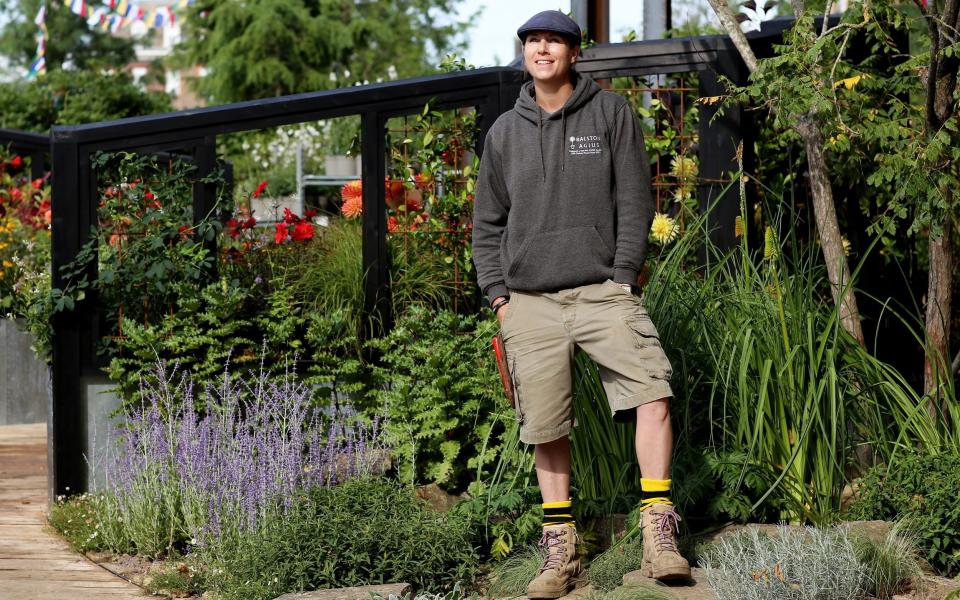
The garden is divided into four, with a vibrantly planted walkway running through the middle. It is one of several gardens with a big message, but I’m not sure it would be that clear to the visitor – pots of soil, compost, subsoil and an area of green manure did not convey a whole lot to me. I did like the garden’s “Mitigation” section, with its meadow and compost area, and the “Adaption” area, with its drought tolerant meadow, but I’m not sure it all pulled together and drove the message home. A massive graffiti backdrop was still waiting to go up, though, so maybe come Monday I’ll change my mind.
Working my way down Main Avenue, the next to impress was the Guangzhou Garden designed by Peter Chmiel and Chin-Jung Chen of Bath-based landscape architecture firm Grant Associates. Chmiel, director of the firm, has worked on projects in China and is hugely impressed with the country’s strategy for biodiversity within its once heavily polluted cities. The Chinese method of putting green lungs within heavily built-up areas is second only perhaps to Singapore.
The duo have created five laminated structures, inspired by the shape of a butterfly’s egg, using bamboo (you can harvest 25 per cent of a bamboo plant at a time without adversely affecting it, it stores more carbon than a tree and for longer, and its durability is around 25 years). A woodland dell structure has clean air blown into it: polluted air is filtered through the dense planting of a bioactive green wall at the back of the garden and cleaned by the natural processes of phytoremediation and bioremediation.
Their other clever tricks include intricate bird feeders and insect hibernators made from 3D printers using 95 per cent recycled plastic. Chmiel (a first timer at Chelsea) described the build-up as a “massive learning curve” and said he was less concerned about the medal and more interested promoting the concept of improving cities – and I believed him.
Arit Anderson, who presents BBC Two’s Gardeners’ World, is putting her neck on the line, as all TV personalities do when they design show gardens: they get lots of scrutiny. Another first-timer, she was clearly enjoying the experience, but said, like many, that it was difficult to find good plants. Her garden, the BBC One Show and RHS Garden of Hope, is not being judged, which does take the pressure off.
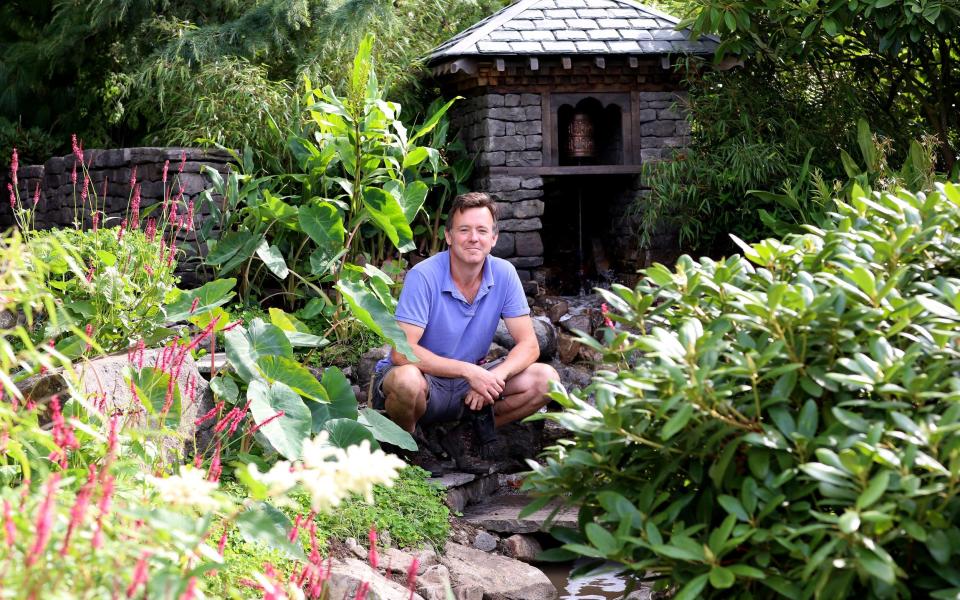
The Trailfinders’ 50th Anniversary Garden, by Jonathan Snow, is a fusion of garden and landscape inspired by the foothills of the Himalayas. Commissioned two years ago, it was designed as a spring garden, so 80 per cent of the plants had to be altered. Snow decided to keep the rhododendrons (obviously not flowering) as they are so key to the Himalayan landscape – let’s hope he is not marked down on it. Watch out for the prayer flags, beautifully crafted stone paths and small prayer huts – the latter I imagine have been well used. Plants such as strobilanthes, thalictrum and anemones add pleasing zaps of colour.

The Yeo Valley Organic Garden designed by Tom Massey seemed to be coming together well. Despite being grown under strict Soil Association rules that prevent the use of pesticides, the plants looked none worse for it, with no signs of insect attack. As with many gardens, some plants look like they were on the turn, but that’s what we expect at this time of year, so surely they won’t be penalised. Musical trees also made an appearance.
The Florence Nightingale Garden by Robert Myers is definitely the designer’s best Chelsea effort yet. It is a strong theme highlighted by clever touches, such as images of her letters and pressed flower collection enlarged and printed on laminated Douglas fir timber walls: the honey-coloured timber has been used for all the structures, creating a modern feel. (Apparently Nightingale, who made her name through her work in the Crimean War, was also involved in hospital design and nursing schools.) Myers’s clever design also incorporates hospital windows looking into the garden and a fabulous white flowering Heptacodium miconioides (the tree of Chelsea this year: I spotted it in several gardens). I thought the pool was cleverly done, painted with a lead finish on a fibreglass lining. And watch out for the foxgloves!
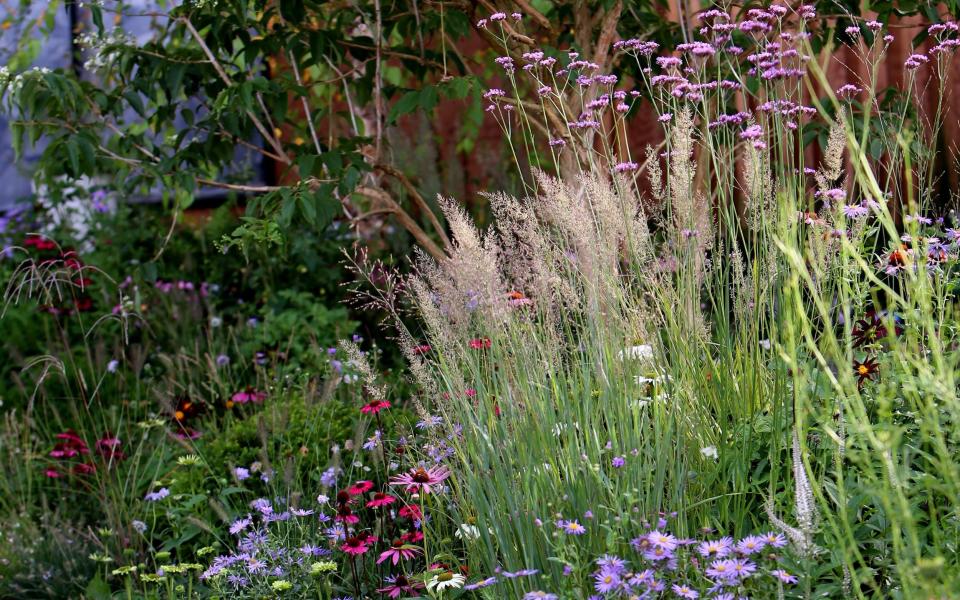
Show sponsor M&G has a garden occupying its usual position at the far end of Main Avenue. Designed by Hugo Bugg and Charlotte Harris, it is a haven for people and wildlife in the city. Many of the materials are reclaimed, with sculptures made from old pipes, skilfully fixed and painted, running throughout the garden. Again, this design was planned in January 2019 ready to roll out in May 2020, so it has had two complete changes of plant palette. I loved the domes of Hedera helix ‘Arborescens’, the Bergenia ciliata ‘Wilton’ with frilly and hairy leaves – and the bird’s nest within a pipe.
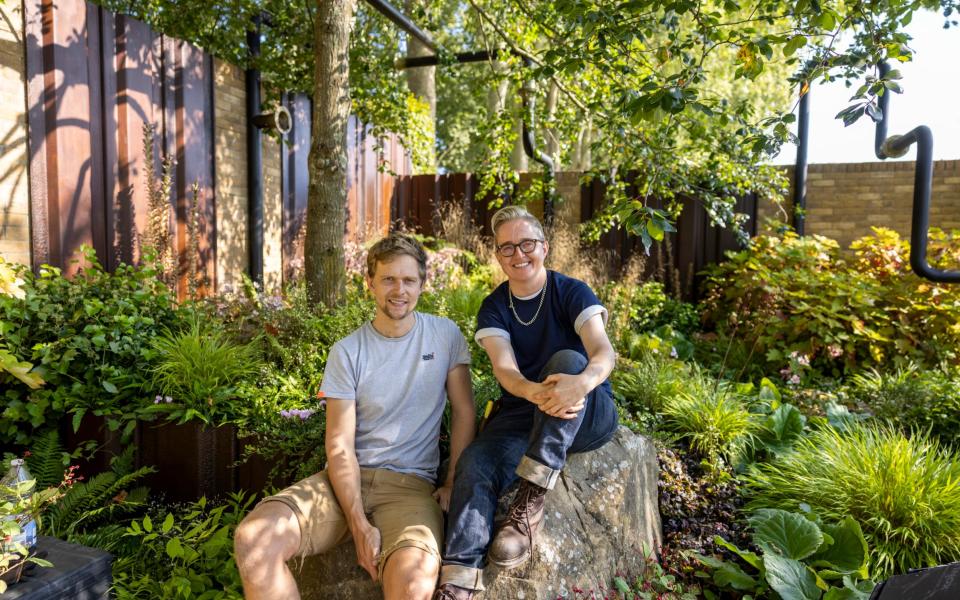
Mark Fane, director of Crocus and contractor for the M&G garden, looked far more relaxed than he normally does at this point in the show. He definitely was enjoying being out of the office and getting his hands dirty. He told me of a new charity he is working with to create 14 more fabulous gardens at Chelsea in future years – but more of that anon.
The Parsley Box Garden by Alan Williams in the Sanctuary Gardens category is a modern take on a potager, with a small outdoor kitchen, large espalier pears and a mix of veg, ornamentals and herbs. The bold, simple and effective design will appeal to many visitors as it is eminently usable, unlike many Chelsea gardens. I was not so sure I liked the brass planters or the huge pots made from charred and lacquered birch ply, but I will reserve judgement until Monday when all the polythene is removed.
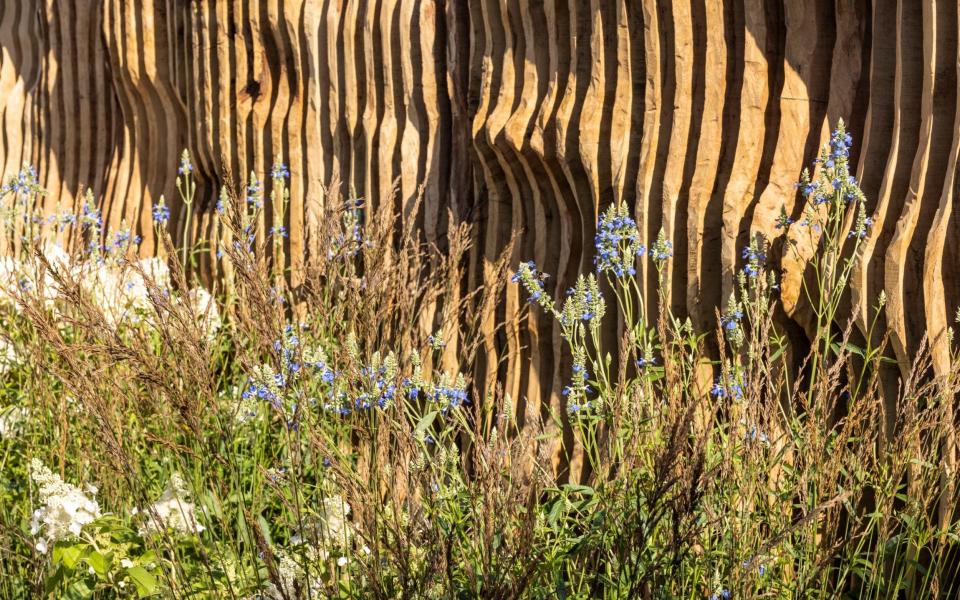
Last, but not least, I loved the Boodles garden designed by Thomas Hoblyn, inspired by children’s classic The Secret Garden. Oak fencing surrounding the plot was created by Jan Hendzel using oak from one single tree that was ripped up to make way for HS2. In one plank they found a musket shot. The fence is formed like a louvre, with 5cm gaps between the 15x5cm planks, so when you get close you can see into the “secret” garden within. The fence is amazing, sculptural and a real statement. Whether visitors can see enough I’m not so sure – there is a history of designers being penalised for restricted views. A beautiful female Rhus typhina in flower sits on the corner and quite wild planting sits outside the fence. The play of shadows in the autumnal sunlight brought the whole to life.
This year I am sure visitors will appreciate the more relaxed vibe to the show and soak it up while gathering lots of new ideas for their own Chelsea at home.

